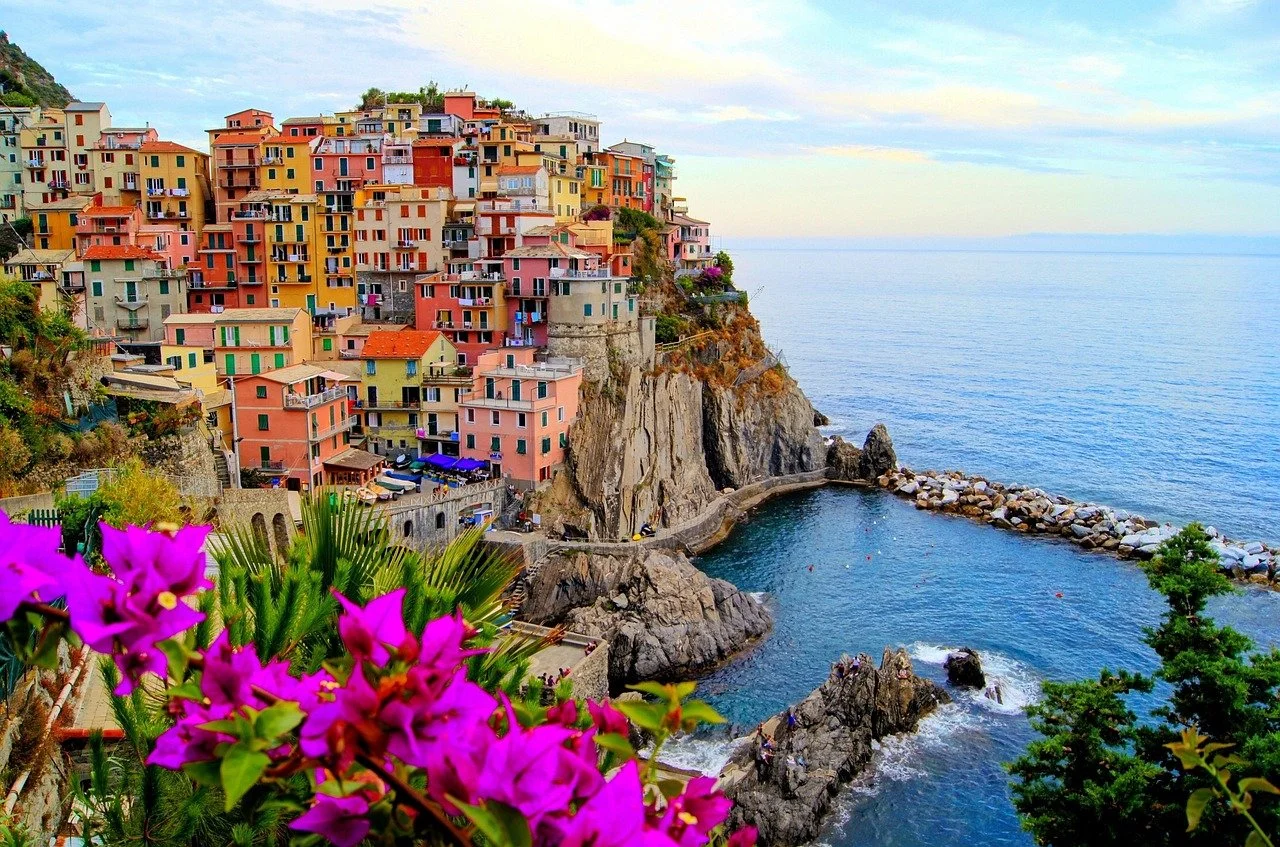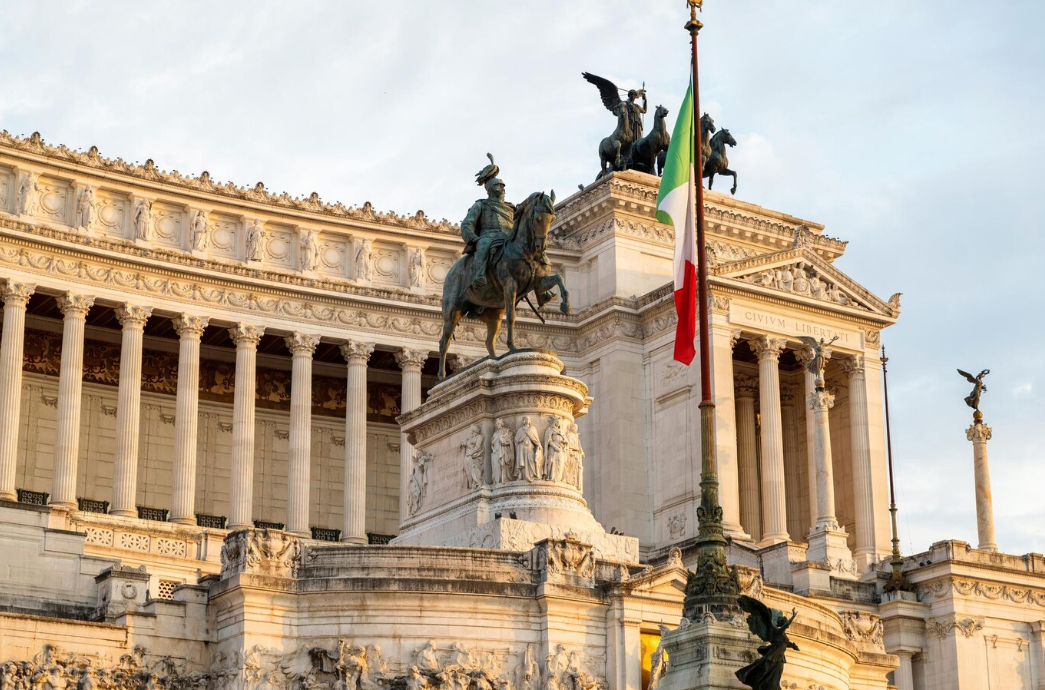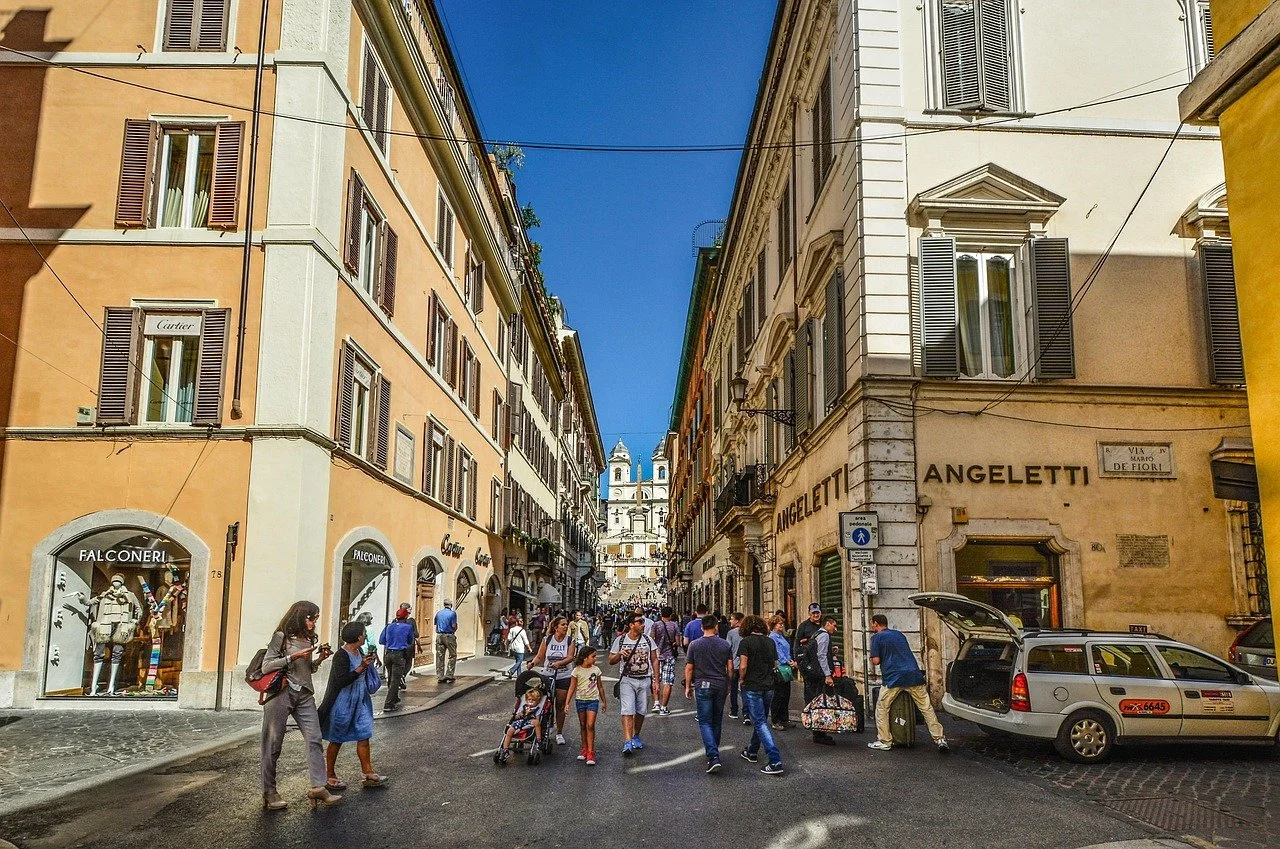Moving to Italy from the USA: Complete Step-by-Step Guide (2025)
Houses on a cliff in Italy.
Craving the la dolce vita lifestyle? Moving to Italy from the USA doesn’t have to feel like a maze. In this guide, I’ll show you how to snag the right visa, tick off residency requirements, and settle into Italian life with ease.
Whether you’re sipping espresso in Rome or exploring Tuscan hills, we’ll cover everything you need to make your move from America to Italy smooth, fun, and unforgettable. Let’s get started!
Understanding Your Visa Options to Live in Italy
Thinking of moving to Italy? First, you need to learn the visa rules. As a US citizen, you can stay in Italy visa-free for up to three months. To live in Italy longer, you must obtain a long-stay (Type D) visa before leaving the USA.
Apply at your local Italian consulate with jurisdiction over your US state. It often takes two to three months. So start early and don’t enter Italy without the right papers if you plan to stay for longer. Here are the various types of visa applications available in Italy.
Elective Residency Visa
The Elective residency visa lets you move to Italy if you earn about $31,000 to $38,000 yearly. This translates to about €31,000 a year for singles or €38,000 for couples.
You can’t work in Italy with this visa, and you’ll need private health insurance and proof of a place to stay. It’s great for retirees and passive-income seekers.
Italy Digital Nomad Visa
Dream of a change in your work environment? Italy’s new digital nomad visa lets you work in Italy for foreign clients.
To qualify, you must earn at least €2,080 monthly and show health insurance. You’ll also need proof of place to live and a clean record. The initial visa lasts 1–2 years and can be renewed.
Work Visa for Italy
Moving to Italy to work means securing a work visa with a job offer from an Italian employer. They must get your “nulla osta” (work authorization) before you apply.
Remember, annual “decreto flussi” residency quotas limit permits. In 2022, Italy offered 80,000 work permit slots. It’s a tight race, but stick with it and you can land your dream job and live in Italy.
Student Visa
Thinking of moving to Italy as a student? A student visa lets Americans enrolled in Italian schools study and work up to 20 hours weekly. You must show enrollment proof, funds, and health insurance.
The visa lasts as long as your study program. However, after your graduation, you can transition to another visa type. After arrival, apply for a residence permit at the local Italian consulate to stay in Italy.
A student in Italy.
Self-Employment Visa
Entrepreneurs wanting to move to Italy can grab a self-employment visa. All you need to do is to enough funds and register your profession. You also need to arrange housing and secure health insurance.
Like a work visa, this permit follows decreto flussi quotas, so plan early. Craft a clear business plan to prove your idea’s value to the Italian economy. Soon you’ll be set to live and work in Italy!
Investor Visa (Golden Visa)
As a high-net-worth individual, you can move to Italy fast with the investor visa. By investing €250,000 in startups or €2 million in government bonds, you can live in Italy sooner.
This visa process is fast and lets you include family members. Ready to relocate to Italy? This option is your shortcut to residency and Italian life.
Other Visa Pathways
The EU Blue Card hooks up highly-skilled workers with job offers and a salary of around $28,000. It’s not tied to quotas, making it easier to move to Italy with a solid work visa.
Meanwhile, Family Reunification Visas let US citizens join relatives who live in Italy. You just need proof of income and the right documents to relocate smoothly.
Visa Comparison Table
Securing Your Permesso di Soggiorno (Residence Permit)
Once you land in Italy with your long-stay visa, the clock starts ticking. Within eight days, you must apply for your permesso di soggiorno. Head to the local post office (Poste Italiane) to grab the kit with forms in multiple languages.
The Naviglio Grande canal in the evening in Milan, Italy.
Fill them out carefully—mistakes mean delays. Then, drop off your paperwork at a “Sportello Amico” post office. After this, wait 1–2 months for your Questura appointment.
Officials will take your fingerprints and photo for your residence permit card. Without it, you can’t open a bank account, sign lease agreements, or fully settle. Plan temporary digs until you get this crucial document.
Essential First Steps: Codice Fiscale and Registering Residency
Getting your codice fiscale right away is a must. It’s like your Social Security number for Italy. Next, register your residency to access healthcare, schools, and local services. These two steps unlock basics like opening a bank account and working in Italy.
Obtaining Your Codice Fiscale (Tax Code)
Your Codice Fiscale is a 16-digit code that works like a Social Security number. You need to obtain it before renting or before you open a bank account in Italy.
Americans can get it at an Italian consulate in the US. Or get it upon arrival at the Agenzia delle Entrate (Italian Tax Office) in Italy.
Bring your passport, visa, and proof of address. Apply in person. You’ll have it immediately—no waiting.
Registering Your Official Residency (Iscrizione Anagrafica)
Ready to lock in your Italian address? After you get your residence permit, head to your local Comune’s Anagrafe office within 20 days. Bring your passport, visa, rental agreement, and proof of funds.
As a non-EU citizen, this step makes you an official resident. It also lets you open a bank account and access healthcare, education, and municipal services.
Some towns accept walk-ins, but others need an appointment. Check your Comune’s website before you go.
Navigating Healthcare in Italy
Italy’s health system, the Servizio Sanitario Nazionale (SSN), welcomes legal residents with open arms. According to the WHO country profile, Italy's healthcare quality is one of the world’s best.
First, sort your visa and enter Italy. Next, head to the local Azienda Sanitaria Locale (ASL). You must join the SSN within 90 days of arrival. You’ll get a Tessera Sanitaria and pick a doctor.
Most care is low-cost. Dental work and therapy often need private pay. If you hold an elective residence visa, you must keep private insurance.
Many US citizens start with private coverage until the SSN kicks in. Emergencies are stellar, and prescriptions are cheap. Remember to show your Italian residence permit and open a bank account for any extra fees. Health here is simple, fair, and caring.
Understanding Your Tax Obligations as an American in Italy
The Italian flag in front of a monument in Rome.
Tax obligations get tricky when you move to Italy from the USA. As a US citizen, you must file US taxes each year, regardless of where you stay in Italy.
Italy also claims your taxes if you spend over 183 days in Italy or make it your main home. Then you pay Italian tax on all your income. Rates run from 23% to 43%, plus regional (1.23%-3.33%). Municipal levies can be up to 0.9%.
Some assets face wealth taxes. The US-Italy Tax Treaty helps avoid double taxation. You can use the Foreign Earned Income Exclusion (FEIE) to exclude about $130,000 in foreign earnings.
You could also use the Foreign Tax Credit (FTC). This will help you to counter the Italian taxes you paid against US obligations.
You still need to report foreign bank accounts. File FBAR (FinCEN Form 114) if your balances exceed $10,000. You could also file a Form 8938 (FATCA) for specified assets. This guide will help you stay compliant.
Finding Housing: Renting and Buying Property
Housing options range from city apartments to countryside villas. Most newcomers start by renting while they explore areas and learn local prices.
As Americans living in Italy, you can buy property in Italy without fuss, thanks to reciprocity. However, owning doesn’t mean you have a residence permit or visa.
Housing costs vary, with Rome averaging €3,353/m². Milan is at €5,456/m² and Calabria around €834/m². Rentals require a deposit, first month’s rent, and often last month’s rent upfront.
Annual leases are common, with rent tied to inflation. Always check that your landlord has proper paperwork. If you plan to settle, open a bank account in Italy early. For buyers, Italy offers great investment chances, from hot markets to renovation projects.
Daily Life: Opening a Bank Account, Language, and Culture
Opening a bank account in Italy helps you pay bills and manage money like a local. Learning Italian and embracing customs makes life smoother. These steps help you feel at home.
How to Open a Bank Account in Italy
Setting up a bank account in Italy takes paperwork and patience. You’ll need your Codice Fiscale, passport, and proof of address. As a non-EU citizen, you’ll also need a valid Italian visa or residence permit.
It can take weeks, so plan ahead. Big names like UniCredit and Intesa Sanpaolo have English services in major cities. Though smaller branches may need you to learn some Italian.
Fees can be high, so compare wisely. For a quick start, try an international or digital bank before you open a bank account locally.
Language and Cultural Integration
A busy street near the Spanish Steps in Rome.
As an American living in Italy, learning Italian boosts your daily life outside big cities. Many in Rome and Milan speak English. However, rural towns rely on Italian for chats.
Italy’s regions differ: Lombardy values punctuality, Sicily loves laid-back days. Embrace local customs like meal times. Shops close for lunch, and you could also join traditions like the passeggiata, the evening stroll.
Understanding these quirks helps you blend in, adapt, and enjoy authentic life in Italy. Plus, you’ll grasp why the cost of living in Italy feels different.
Education Options for Children
If you are moving to Italy with children, you can enjoy some educational perks. Public schools are free for kids ages 6–16, with lessons in Italian! After 16, students can continue their studies until the age of 18. These schools teach broad knowledge and critical thinking.
In Rome, Milan, and Florence, international schools offer various curricula. These include IB, American, or British curricula for €8,000–€25,000 per year. Homeschooling is legal, but it must meet strict guidelines and checks.
Cost of Living: What to Expect
Italy has a lower cost of living than many American cities. The rent here is about 114% cheaper.
According to Numbeo's data, the overall prices run roughly 39% lower. A family of four can expect monthly bills around €3,102.9. Meanwhile, singles might spend €882.7 (excluding rent).
For Americans living in Italy, this means stretching dollars further. Plus, opening a bank account or sorting a visa is easier than you think.
Cost of Living Estimates by City - Excluding Rent
Want a taste of the cost of living in Italy? Food stays affordable if you shop local and cook. Pick fresh veggies at the market or snag a slice at a pizzeria.
Fancy dinners? They’re splurges.
Getting around is easy: public transportation in EU hubs is cheap. But if you’re in Italy from the USA and buy a car, expect higher fuel and insurance costs.
Driving in Italy
Driving a small car in the Italian countryside.
As a US citizen, you can cruise Italy’s roads with your US license. To do this, you’ll need your International Driving Permit. This is valid for up to 90 days.
But as an American living in Italy, beyond that, you’ll need an Italian driver’s license. Once your residence permit hits one year, pass the Italian exams. In some cases, you can convert your license.
Roads are zippier here, parking is snug, and stick shifts rule. Many foreigners skip car ownership and embrace public transit.
Final Preparations and Considerations Before You Move to Italy
Moving to Italy from the USA means paperwork. Gather birth, marriage, and medical records. Also include your vaccination proof, transcripts, and tax returns.
Many need an apostille for EU acceptance. Movers vary in cost and quality, so compare carefully. Remember, Italy runs on 230V, so you’ll need converters.
Consider specialized services for a smoother transition. Once you arrive, apply for your visa and residence permit. Within 20 days of receiving your Italian residence permit, register your address and open a bank account. Join local groups and explore your neighborhood. Apply for Italian citizenship if you plan to stay long term.
Conclusion
Ready to make Italy your new home? Follow this guide, from getting an Italian visa to settling in with a bank account and residence permit. Embrace local life—learn the language and explore your neighborhood. With a bit of planning and flexibility, your move from the USA to Italy can be smooth and truly unforgettable. Buona fortuna!
Frequently Asked Questions About Moving to Italy from the USA
How much money do you need to immigrate to Italy?
You’ll need an elective residence visa with ~€31,000 income. Work visas depend on your job. Budget $15k–$20k to move and open a bank account.
Is it hard to get a job in Italy as an American?
Landing work feels like a puzzle for US citizens in Italy. Chances are better up north than in the southern regions. Learn Italian, network, and secure your permit of stay. It gets better when you become an Italian citizen.







